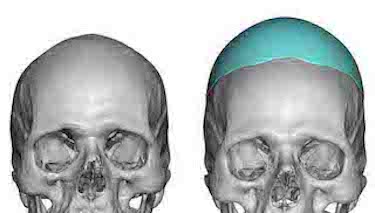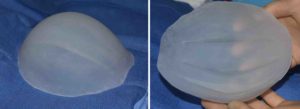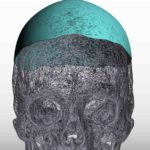Background: Physically changing one’s height in adults can be accomplished by a variety of non-surgical and surgical methods. The historic non-surgical method was the placement of lifts in one’s shoes to the most contemporary method of lower limb lengthening. Shoe lifts are the simplest method and height increases of up to 1’’ are usually obtained. (women in heels can do much more) Limb lengthening by osteogenesis distraction is the most involved surgical method but height increases of two to four inches is possible.
Another less known method of ‘heightening’ are skull implants. While placing an implant on the top of the head seems like a relatively obvious choice, there have not been good methods to do so in the past. But with today’s custom skull implant technology virtually any type of skull implant can be designed. The challenge is to do so with an implant that is capable of being placed without excessive scarring and within the tolerance of what one’s natural scalp stretch can accommodate.
When designing custom skull heightening implants there are several important preoperative considerations. First and foremost the point of maximum height projection of the implant and the implant’s volume must consider how the scalp will stretch to allow it to be safely inserted without incisional healing problems. In other words based on the height desired is a first stage scalp expansion needed? Secondly it is important to realize that the implant can just not be mainly a vertical increase. Too narrow of an implant base will give an odd look to the head shape. The implant base must be broader and cover much more of the skull’s surface area than one may think to allow the increased head height to also be associated with a more normal head shape.
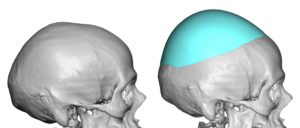
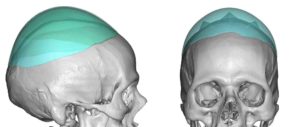



Case Highlights:
1) One way to vertically heighten is a custom skull implant.
2) Modest height increases can be obtained by the immediate insertion of a custom skull implant, more significant head height increases requires a two stage process with a first stage scalp expansion.
3) Thicker custom skull implants require innovations in design for insertion and placement through small scalp incisions.
Dr. Barry Eppley
Indianapolis, Indiana

